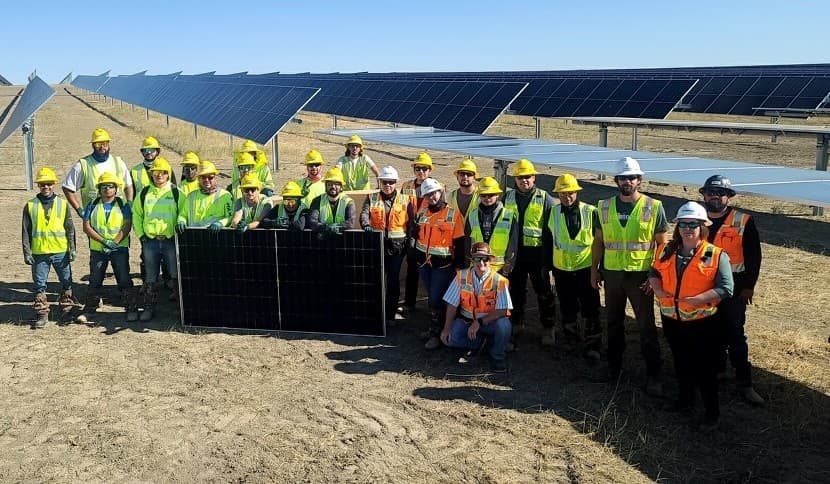Home solar incentives | Duke’s PowerPair, N.M. tax credits, Pico Rivera program

Duke Energy has enrolled more than 1,300 customers in North Carolina in its new PowerPair pilot, a one-time incentive-based program designed to help make a home solar plus battery system more affordable for customers.
Approved by the North Carolina Utilities Commission (NCUC) in January 2024 and launched in May 2024, the pilot program offers up to $9,000 in incentives for residential customers who install a new solar plus battery system. The total incentive is based on the approved capacity of the solar array and battery installed. PowerPair was designed in collaboration with numerous stakeholder groups at the direction of the NCUC.
“North Carolina already ranks fourth in the nation for overall solar power with approximately 45,000 Duke Energy customers generating about 350 megawatts through solar panels,” said Meghan Dewey, vice president of products and services for Duke Energy. “PowerPair is a valuable solution for our customers ready to invest in solar plus storage for their homes. It is one of several ways we’re helping our customers save energy and money, while continuing to explore new ways to help manage low carbon grids of the future.”
Participants in the pilot may choose to enroll in PowerPair on a residential solar choice rider (RSC) or through a net metering bridge rider (NMB) and receive a one-time incentive of up to $9,000. NMB customers additionally enroll in the company’s new Power Manager and EnergyWise Home battery option and receive additional monthly bill credits for allowing Duke Energy to periodically adjust their battery system’s operating setting for a temporary period to provide stored electricity back to the grid, which benefits all customers.
New Mexico Tax Credit program

The Energy, Minerals and Natural Resources Department is accepting applications for the state’s Supplemental New Solar Market Development Tax Credit program. This program is for New Mexico taxpayers who were denied a solar tax credit in years 2020 through 2023 because the program’s funding was exhausted before they applied.
“On behalf of the New Mexico taxpayers who missed out on this tax credit, through no fault of their own, we thank the Legislature and Gov. Michelle Lujan Grisham for creating this supplemental fund,” said Rebecca ‘Puck’ Stair, director of EMNRD’s Energy Conservation and Management Division (ECAM), which administers the tax credit program. “We stand ready to process those applications and support the deployment of more solar energy in the Land of Enchantment.”
First enacted in 2020, the New Solar Market Development Tax Credit program offers a tax credit up to 10% on solar system installation costs for qualified solar thermal and PV systems, up to a maximum of $6,000 per taxpayer per year.
From 2020 through 2023, EMNRD was forced to reject hundreds of solar tax credit applications because the annual funding caps mandated by the legislature were quickly reached. In the 2024 legislative session, lawmakers appropriated $20 million to fund credits for taxpayers who missed out the previous three years. The legislator also boosted the program’s annual cap to $30 million. EMNRD also is processing applications for taxpayers who installed solar systems in 2024.
Since the program’s inception, more than 13,000 New Mexicans have received solar tax credits.
Pico Rivera, California Power Choice program

CalEPA identifies Pico Rivera (a community between Los Angeles and Anaheim) as one of California’s disadvantaged communities. The Pico Rivera Innovative Municipal Energy Power Choice program hopes to remove financial barriers by providing residents a solar system and home backup battery at no cost. The city is also offering an EV wall charger for the first 50 residents.
This piece shares the anecdote of homeowner Jose Santana, whose he’s seen his energy bill increase to about $250 when running his air conditioner. “Now, he’s looking forward to his bill staying closer to $115 per month through the Pico Rivera Innovative Municipal Energy Power Choice program.”
“What the participant will be responsible for is paying $115 per month for the first battery. This includes the solar panels and the first battery. The second battery or any after that is going to be $75 more and a low energy rate of 14.5 cents rate per kilowatt hour,” stated Office of sustainability general manager Victor Ferrer.
Ferrer said about 36 residents have signed up so far.





Comments are closed here.